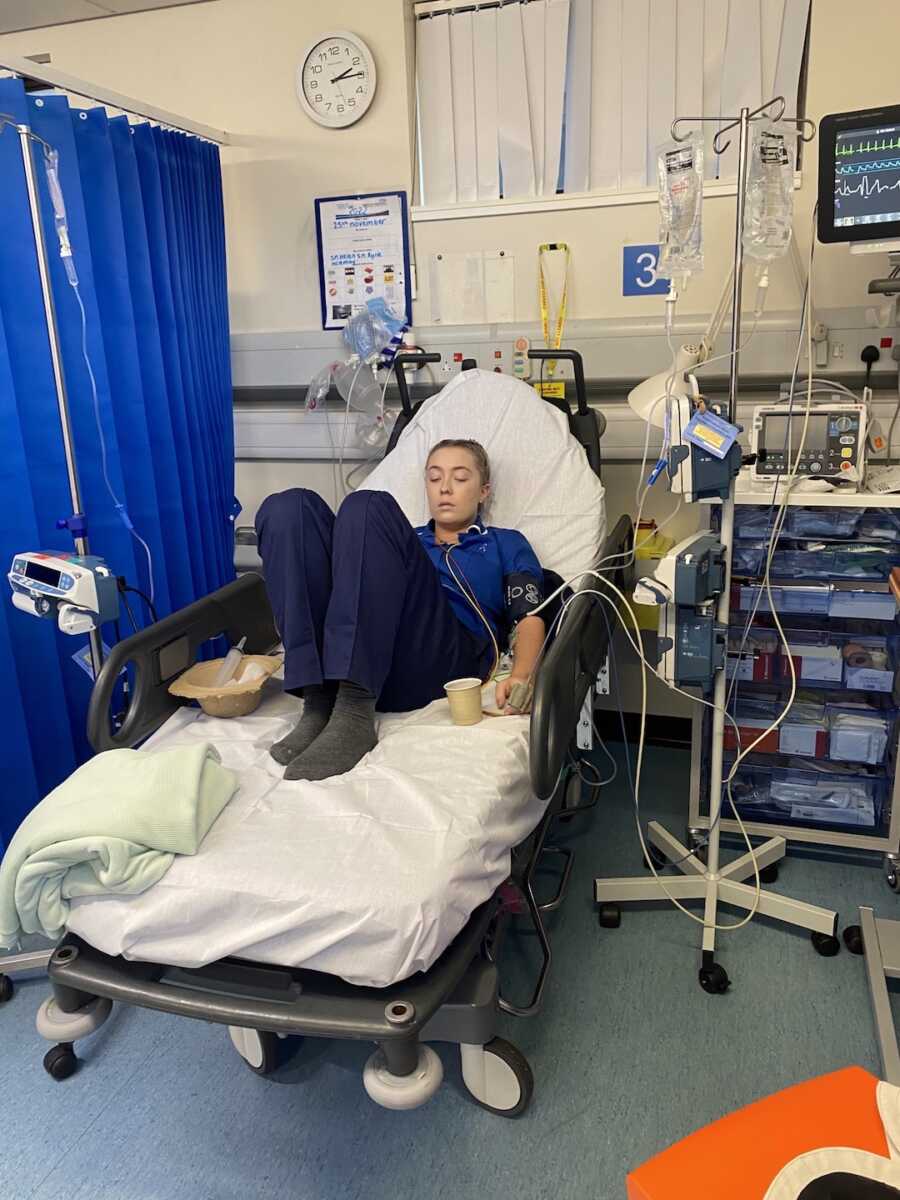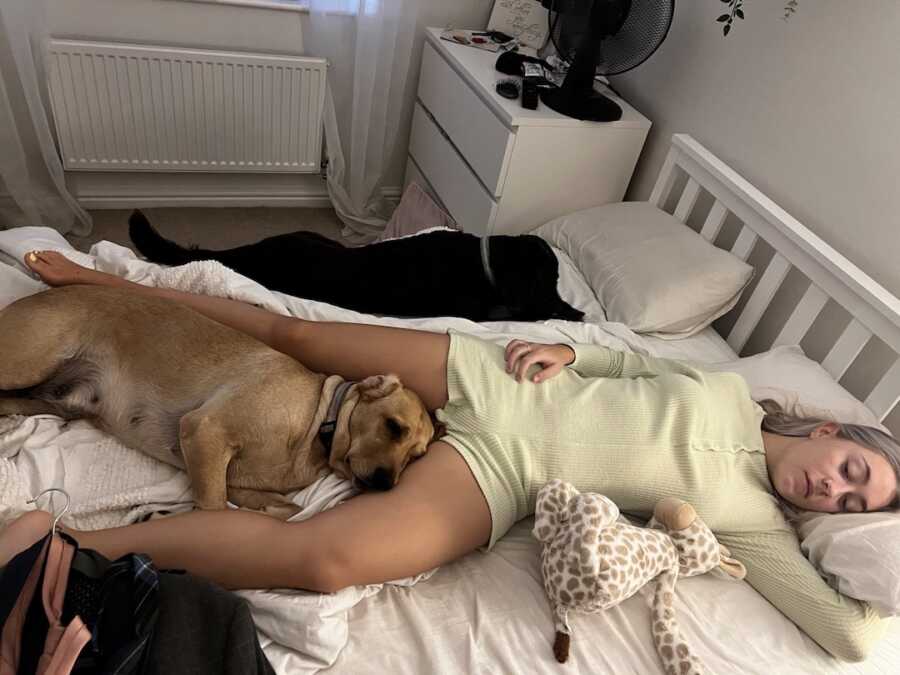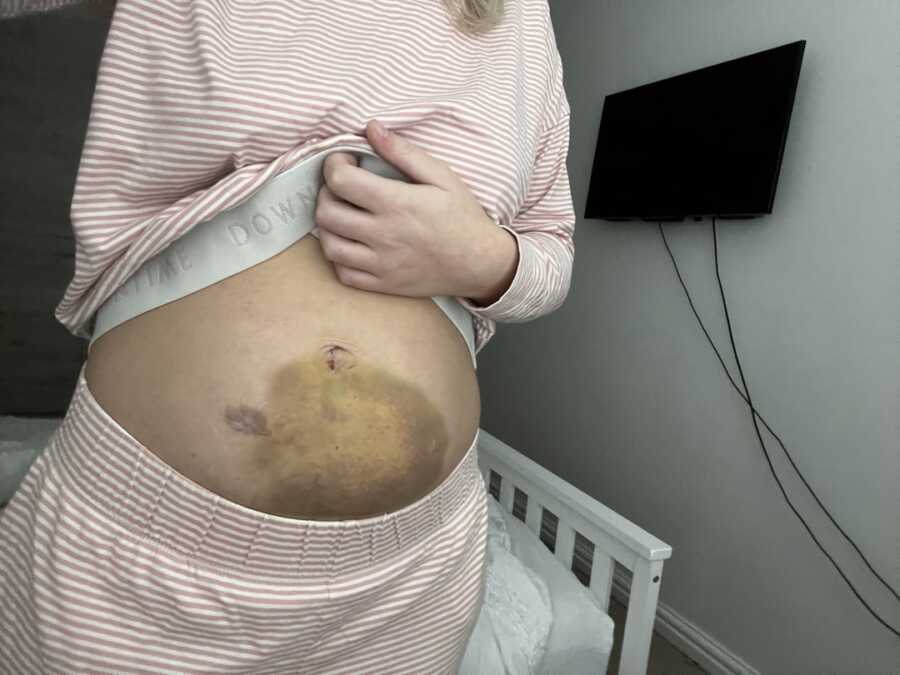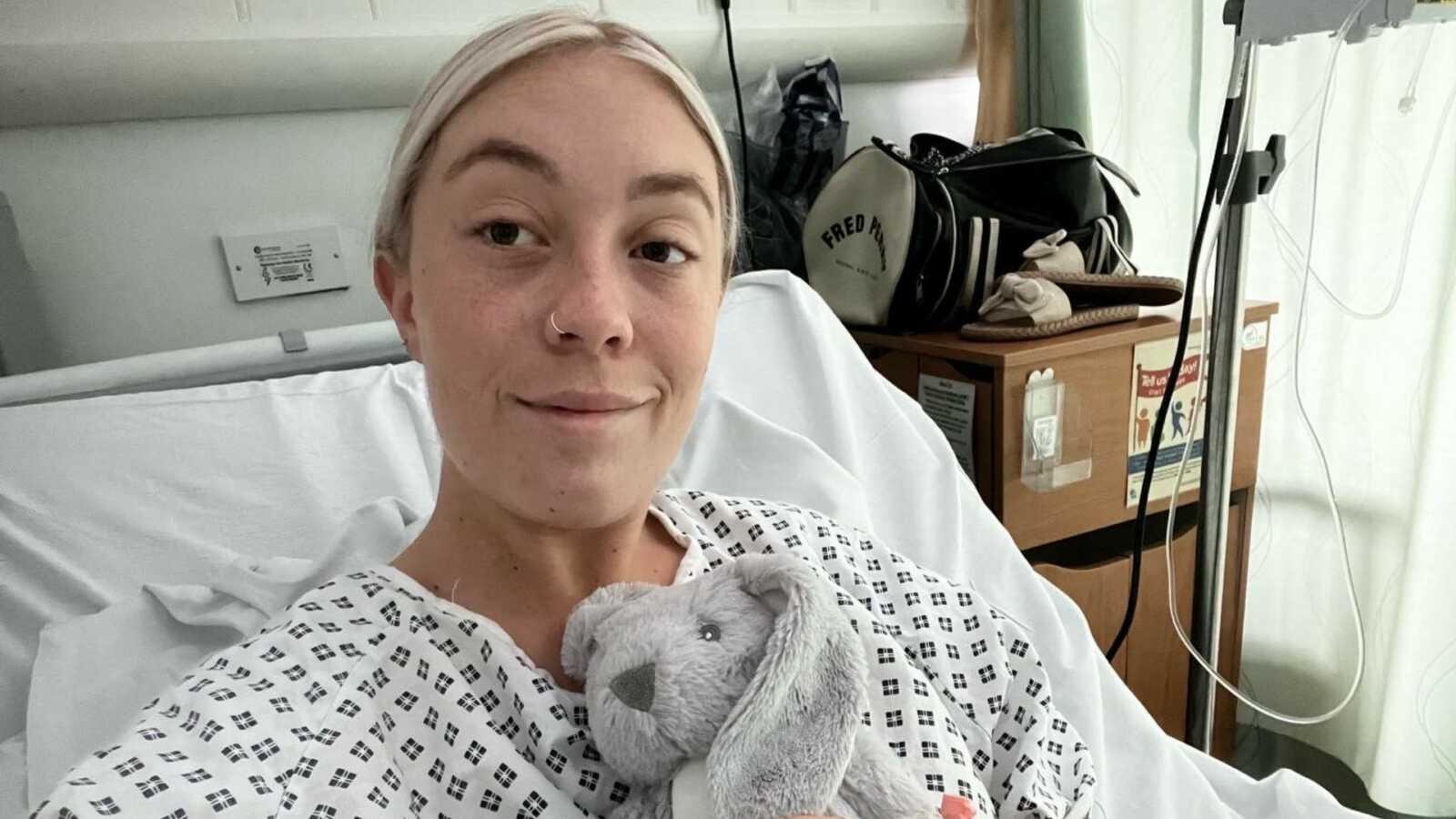The First Signs Of Endometriosis
“I first began experiencing symptoms of endometriosis when my period started, around 12 years ago. I would always have painful periods and heavy bleeding and occasionally had to miss school. I just thought that this was normal, and that everyone’s period was like mine. When I was growing up, I had a lot of male friends, and it wasn’t something I felt I could talk to anyone else about.
As the years went on as a teenager the period pain would get worse, I would visit the general practitioner multiple times complaining about this. During this time, it was never suggested to me that anything could be wrong, and I felt my concerns were not listened to or valid. I started the contraceptive pill around age 14/15 as the GP advised me it would manage how heavy my periods were and help with the pain.
It did seem to help me somewhat and I remained on the contraceptive pill for a number of years. Looking back now, I know that this simply masked my symptoms and did not treat them. The contraceptive pill does not prevent the spread or growth of endometriosis.
At 18 I got pregnant (despite being on the contraceptive pill) and had a healthy baby boy. Following giving birth, I experienced an extended period of bleeding. Unfortunately, this persisted for 9 months despite being prescribed various contraceptive pills, and injections; you name it I had it.
It was for this reason I believe the GP finally listened to me and referred me to gynecology. For a lot of people, it can take a long time and certainly a lot longer than I had to wait.

Struggling To Get An Endometriosis Diagnosis
I was seen quite soon after by Gynaecology at a local health center. The consultant told me I could not have endometriosis as I was so young and tried to manage my symptoms with various medications which did not help. One of the medications he prescribed was tranexamic acid, which is used to reduce the amount of bleeding, this had no effect and at this stage I was changing a maternity pad up to 10 times a day. I could not believe the consultant deemed this to be normal.
After numerous appointments over the next 10 months or so I was listed for surgery which was carried out at a private hospital as an NHS patient. The surgery I had was an exploratory laparoscopy during which I was told they had found ‘mild endometriosis’. Following this diagnosis, I was referred to my local hospital under the care of the gynaecologists.
Whilst I did not appreciate it at the time, the doctors I was seeing at the hospital were not specialists in endometriosis and their main practice was not endometriosis. My management at this time consisted almost solely of pain relief.
I did however see the endometriosis link nurse who discussed the various symptoms I was experiencing including painful sex. She seemed to think my problems were not necessarily endometriosis but this was later confirmed to be endometriosis. She instead prescribed the use of dilators and suggested my pain was more connected to anxiety in the context of me expecting the sex to hurt.
After a few appointments and persisting failures of contraceptive attempts to control my symptoms, I was offered a course of prostap. I was told at the time that by receiving prostap, during the time I was receiving treatment, I would be in an artificial menopause and should not experience symptoms of endometriosis. The endometriosis should not be able to grow, and I should be able to live a ‘normal life’.
The side effects of prostap are that of menopause but I, as do the majority of women with endometriosis, thought those to be reasonable when you consider the alternative. My life at this point was littered with hospital attendances, I would be treated in A&E and receive strong painkillers before being sent up to the ward for ‘pain management’ which consisted of a junior doctor reviewing me and prescribing another medication which inevitably would not work.
During this time, I was training to be a nurse and balancing this with caring for my son (at this point age 2).

Whilst I was on prostap my symptoms reduced significantly and I felt optimistic for the first time in a long time. I could engage with my hobbies, work, study, and spend better time with my family.
Managing Symptoms
However, this was not going to last as you cannot take prostap indefinitely. As with menopause, the risks include that of osteoporosis and although I was taking Hormone Replacement Therapy, a DEXA scan (bone density scan) showed that my bones were not quite as dense as they might have wanted them to be, and they suggested I take a break from Prostap.
I came off prostap and my symptoms returned with a vengeance. They typically recommend that you have at least six months between courses of prostap which I almost managed. During the time I was recovering from the Prostap, the endometriosis was allowed to spread.

In November 2019 I was admitted to the hospital with abdominal pain and was admitted to the gynecology ward. Despite my history, the doctors thought I may have appendicitis and took me to surgery for an appendicectomy. This was carried out but following surgery, I was seen by the hospital’s endometriosis specialist (and specialist nurse) who requested that my onward care be with her rather than the other gynecology consultants at the hospital.
I resumed prostap in early 2020 and this time remained on the drug until I had my next endometriosis surgery in June 2021.
Prior to surgery, I had an MRI scan which revealed that my uterus had adhered to my bowel, and it required separating.
I had the surgery carried out in June 2021 and my recovery from surgery was unfortunately complicated. My wounds would not heal, and I had a persisting infection that required two more operations, the last of which being in October 2021.

During this time, I did however get relief from the endometriosis symptoms but that was relatively short-lived and my symptoms returned around January 2022. I had an MRI scan at this time to assess the extent of my endometriosis.
Pregnancy With Endometriosis
I transferred my care to a more specialist hospital as I was showing signs of widespread DIE (deep infiltrative endometriosis). In March 2022 I found out I was pregnant with a baby that we have been trying for since approximately 2020.
In April 2022 we received news our baby was not one but two. Unfortunately, the second baby was in my left fallopian tube and required removal. Despite this, baby #1 was still healthy.
Shortly after the surgery to remove the second baby in April 2022 I began bleeding quite heavily. I had numerous scans which confirmed my baby was healthy, but around mid-May 2022 we found out there was a subchorionic hemorrhage next to him that was growing. At our 12-week appointment, we also received the news that our baby required further investigation as they were showing signs suggestive of a developmental problem.
We underwent further screening which thankfully confirmed that everything was normal and inadvertently confirmed with us that he was a boy!
Despite the good news, I continued to bleed heavily, and I changed my pad numerous times a day which were soaked with blood. One day in particular I changed my pad 22 times, so I went to the hospital. They were concerned so I was kept in the hospital for a few nights before being discharged.
I remained home for a little under a day before returning. Whilst in hospital I had a large antepartum hemorrhage and lost 4L of blood. We had to make the difficult decision to compassionately induce our baby despite him being 17 weeks gestated. The doctor put it plainly to me that if I did not take this course of action, I would die and neither of us would live.
I delivered my baby, and we named him Euan Thomas.
Following discharge, I continued to feel unwell, and it became apparent I had retained part of my placenta and I had to return to the hospital for it to be surgically removed.
Fertility-Sparing Surgery
In July 2022 I had an appointment with the endometriosis specialists, and they advised me that my MRI taken in January 2022 revealed that the endometriosis had spread to my bowel, my ureters, my bladder, and the ligaments in my pelvis.
The only options were for extensive surgery to try and preserve my fertility or to carry out a hysterectomy.
I opted for fertility-sparing surgery and I was referred to be discussed in the Gynaecology MDT.
While waiting for surgery my condition progressed further and I now have endometriosis on my belly button, abdominal walls, and my adrenal glands.
I am now unable to urinate without a catheter, I bleed from my belly button whenever I menstruate, and I am on long-term steroids as my body no longer produces cortisol.
Life With Endometriosis
The endometriosis diagnosis per-say did not change my life but rather confirmed something within me that I always knew deep down. A diagnosis is not a magic label that makes things better but it does allow you access to treatment options that may not be open to people who do not have a formal diagnosis.
Endometriosis is now encompassing almost every aspect of my life. I am currently in the hospital more often than I am not. The endometriosis causes me immense pain and prevents me from working as often as I want to; the impact of endometriosis on my medical health is quite separate from the effect it has on my mental health. I am not able to engage in activities a typical 24-year-old would.
I am now in a position whereby I have to take medication just so my body doesn’t give up on me because it does not generate its own cortisol, this is something that until it happened, I never thought could arise from something that was explained to me at an early age as ‘just a bad period.’
What keeps me positive is my support network, I have family and friends who are a great help to me but it doesn’t prevent there from being bad days. Someone with endometriosis is sadly more often than not a victim of someone who doesn’t understand the condition believing that they are exaggerating. It is difficult but you need to rise above it.
I would like to let everyone reading this who has endometriosis, thinks they could have endometriosis, or has someone in their life who this is relevant to; you are not alone.”

This article was submitted to Love What Matters by Lucy Bowker of Oldham. You can follow her on Instagram. Join the Love What Matters family and subscribe to our newsletter.
Read more stories like this:
Do you know someone who could benefit from reading this? SHARE this story on Facebook with family and friends.



